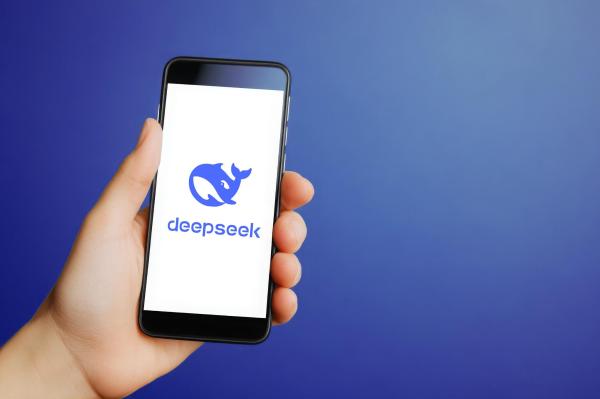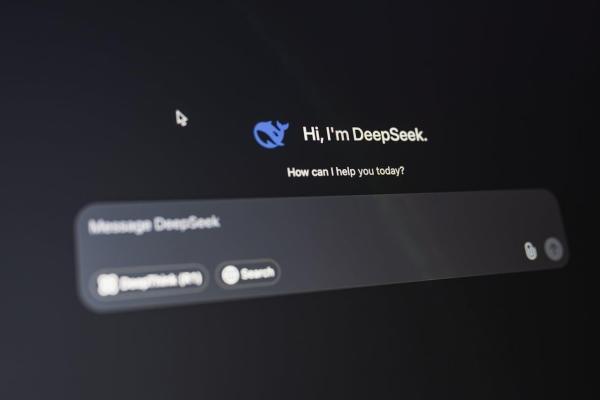What Is DeepSeek and How Does It Work?


DeepSeek is an artificial intelligence chatbot that uses deep neural networks as a form of deep learning to perform more advanced and precise searches. It is designed to perform intelligent searches in large volumes of data, identifying complex patterns and relevance beyond simple keywords. It is owned by the Chinese company that operates under the eponymous name of DeepSeek.
DeepSeek uses AI technologies that understand context, semantic meaning and underlying relationships in the data that are being analyzed. In this oneHOWTO article, we ask what is DeepSeek and how does it work? In answering this question, we also look at how DeepSeek is different to other AI platforms.
What is DeepSeek?
DeepSeek is an advanced artificial intelligence that uses deep neural networks to provide smarter, more precise and more contextual answers to prompts. These prompts are entered into a chatbot AI model which elicits responses from the AI language model. It is designed to perform intelligent searches in large volumes of data to provide these responses, identifying complex patterns and relevance beyond simple keywords.
Traditional search algorithms rely on exact keyword matching or shallow searches. In comparison, DeepSeek uses AI techniques that understand the context, semantic meaning and underlying relationships in the data it is analyzing. This has given the company behind DeepSeek a recent boost in public profile which has threatened to supersede some of the more well-established AI language models out there.
Learn more about another AI chatbot which has recently been developed with our article asking what is Gemini in Google Messages?

How does DeepSeek work?
DeepSeek functions by analyzing various data in response to a prompt provided by the user. This is thanks to an advanced AI language model which works in the following way:
- Unstructured data analysis: DeepSeek is capable of processing large amounts of unstructured data, such as text, images, videos, audio, etc. It uses deep learning models to do so, learning to identify patterns and features within that data without the need for predefined structures.
- Natural language processing (NLP): uses natural language processing (NLP) techniques to interpret human language more naturally. This means it's not limited to searching for exact word matches, but can better understand the intent behind a query, identify synonyms, recognize related concepts and handle language ambiguities.
- Semantic search: the main difference between DeepSeek and traditional search engines is that it doesn't rely solely on exact keywords. Instead, it uses a semantic approach. This means that DeepSeek attempts to understand the context and meaning behind queries to find relevant results that don't rely on an exact match to the entered words. This approach significantly improves the accuracy and relevance of results.
- Deep neural networks (DNN): DeepSeek uses deep neural networks trained on large amounts of data. As the system processes more information, deep learning models refine their prediction and search capabilities, improving the accuracy of results over time. Neural networks make it possible to identify complex patterns that simpler approaches might not be able to detect.
- Continuous learning and feedback: as users interact with DeepSeek, the system can learn from those interactions and feedback. This allows it to adapt to individual user preferences and improve the relevance of results over time. If users click on certain results more often or perform similar searches, the system adjusts its algorithm to provide better answers for future searches.
- Advanced data classification: DeepSeek is capable of classifying and organizing data into very specific categories, even when that data is scattered or unstructured. For example, instead of simply returning a list of results that match a search keyword, DeepSeek can organize those results by category, relevance or even related concepts which we have not considered in our prompt.
- Improved answers with multiple content types: in addition to handling text, DeepSeek is also effective at working with images, videos and other types of multimedia content. It can understand the relationships between text and images or videos, allowing for more comprehensive searches. For example, searching for a term will not only return text articles, but could also include related images or videos.
What is DeepSeek used for?
DeepSeek serves to make information search and retrieval processes smarter, faster and more personalized. Its main applications include improving prompt responses, analyzing unstructured data, personalizing content and improving the user experience across various platforms.
Some of its main functions are:
- More precise and relevant data retrieval
- Analysis of large volumes of unstructured data
- Improving user experience on search platforms
- Personalization and content recommendation
- Search for multimedia content (images, video, audio, etc.)
- Academic and scientific research
- Analysis of patterns and trends
- Improving customer service systems
Learn how to change the Google icon in Chrome if you want to personalize your search engine.

Differences between DeepSeek and other artificial intelligence models
You may be enquiring about the DeepSeek chatbot because you have heard of its recent emergence on the global AI tech market, wiping out around $1 billion of stocks from its rivals[1]. This is due to offering services and a level of efficacy which may be improvements on their rivals. We contrast DeepSeek with other AI models using the following criteria:
- Semantic search vs. keyword-based search: DeepSeek analyzes semantics and context, allowing it to deliver more accurate and relevant results, even if the words don't match exactly.
- Using deep neural networks: through deep learning, the system can understand relationships between concepts, images and text, improving the accuracy of its responses in the process. It benefits from deep neural networks which allow it to work with more complex data and understand much more subtle patterns and contexts. Most other AIs use machine learning techniques or simpler algorithms that don't always capture complex relationships in the data.
- Adaptability and Personalization: DeepSeek has a remarkable ability to learn from user interactions and adapt to their preferences. Over time, the system improves its ability to provide more relevant results based on previous interactions, making it increasingly efficient and accurate in searches.
- Processing unstructured data: DeepSeek is particularly effective at processing unstructured data, such as text, images, videos and audio. It can search across different types of content without the need for predefined structures, making it useful in contexts such as multimedia search and analyzing large volumes of unorganized data. Many traditional AIs are designed to work primarily with structured data (tabular databases, numerical data, etc.) or require pre-organized data.
While it has not yet cracked the top 10, perhaps the growing popularity of DeepSeek will soon make it one of the most downloaded apps in the world.
If you want to read similar articles to What Is DeepSeek and How Does It Work?, we recommend you visit our Electronics category.
1. Milmo, D., Hawkins, A., Boothe, R., & Kollewe, J. (2025). ‘Sputnik moment’: $1tn wiped off US stocks after Chinese firm unveils AI chatbot.
https://www.theguardian.com/business/2025/jan/27/tech-shares-asia-europe-fall-china-ai-deepseek






